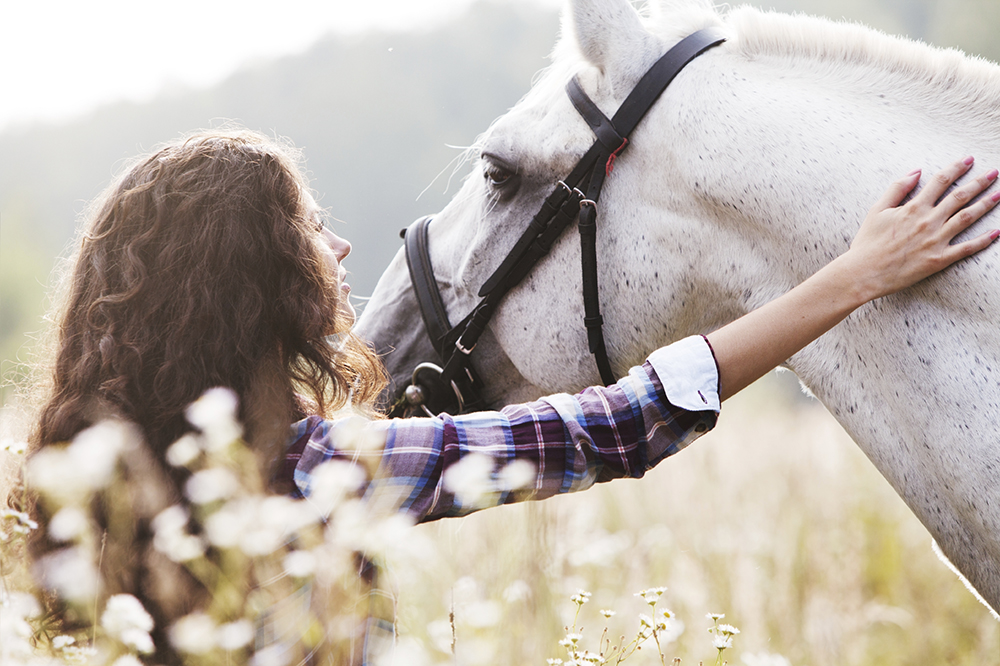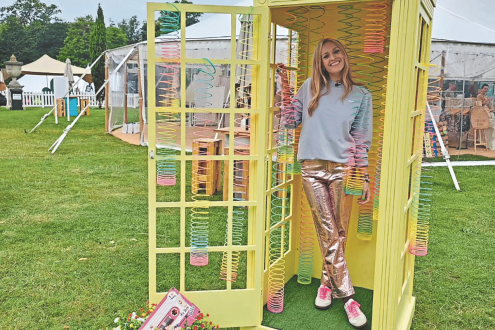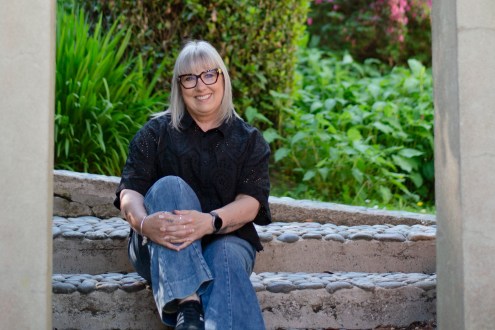The power of equine therapy
Amy Fleming was a stressed city-dweller with little time for reflection. But equine therapy, which harnesses the sensitivity of horses to reflect our emotions, changed her thinking and behaviour

The weather is bright and fresh. Shadows roll over the surrounding fields and I’m tearful but elated, after finally acknowledging a troubling issue I’d dismissed for too long. This is the last of eight equine-assisted therapy sessions, during which, hanging out with horses has shown me that I often ignore how I’m really feeling, how this affects my actions, and how effective I can be when I live in the moment.
This has been my first foray into therapy and working with horses. I’m a working Londoner: far too busy to relax or look within. I’ve never been diagnosed with a mental health issue; I’m just your average anxiety-ridden modern woman, familiar with panic attacks, migraines and the vein that pops on my right temple when I have too much on. Having recently turned 40, I’m on a mission to learn how to be less short-fused, for the sake of my two small children as much as myself.
After moving with my family to Gloucestershire, I discovered the Red Horse Foundation around the corner, describing itself as ‘a centre for equine-assisted psychotherapy and learning’. I grew curious about this therapy. The first review paper into its efficacy was published in March 2015, finding benefits including recipients learning to read non-verbal cues, to trust, nurture and be assertive, gaining greater self-esteem, self-control, empathy, self-awareness, emotional awareness and ability to focus. It is increasingly used to help vulnerable and mentally ill children, who resist conventional treatment. War veterans past and present have also turned to horses to help with post-traumatic stress disorder. A clinical psychiatry study last year found that equine therapy significantly reduced physically aggressive outbreaks in violent psychiatric patients. Since its inception in 1999, it is now offered in 49 countries, by 4,000 practitioners. So what is it about horses, I wondered, that makes them so healing?
Nowhere to hide
It was something of a relief to discover that it doesn’t all hinge upon horses being magical, spiritual creatures. They may well be beautiful and fun, but it’s their size and wariness that makes them effective as mental-health tools. Being herd and prey animals, horses are keenly alert to non-verbal communication and potential danger. They can tell if a nearby predator is in hunting mode, and if a person is calm and confident enough to trust at any given moment. Recent research shows that they can even read human facial expressions.†
There’s no faking it with horses, which is why, with the lightest of guidance from a (human) therapist, they can hold a mirror up to you. They are also non-judgmental and like being stroked as much as dogs and cats. Petting a half-tonne beast to sleep is wonderful, but no matter how friendly a horse might be, the dangers posed by its sheer heft holds our attention and breaks down psychological barriers.
In equine therapy, there is no riding involved. Sessions start in a yurt, with a chat and body scan with practitioner and Red Horse founder Lisanne Peters. Then we walked among the herd. Being small and unfamiliar with horses, I felt most comfortable with a grey pony, Sugar. Afterwards, I had to imagine I had a horse’s body, with two back legs, behind me. It made me feel positively monolithic. Lisanne suggested I try this visualisation when I feel uneasy or am struggling with the children.
All in good time
As I grew more comfortable, I started working with Sugar in a big arena. My first task was to approach her in my own time, clip a lead rope to her collar and take her for a short walk. I employed my usual tactic of aiming to get it over with as fast as possible. Only I couldn’t, because she blanked me, studiously scratching around for food instead. Lisanne reminded me there was no rush, and I noticed how I’d pressured myself to do it without stopping to plan or pay heed to my reservations.
I was encouraged to stroke Sugar, get to know her, then lead her only if I felt comfortable enough. Sugar grew docile, lowering her head in submission and softening her eyes. I looked at the horizon and led her towards it.
More insight came when we started to explore boundaries. Lisanne began to march towards me, almost menacingly, and I was to raise my hand when she got too close. I had no idea where my boundary was; I wanted to be polite so I tolerated her for as long as I could, raising my hand way after – she said – my body language had warned her off. So I allowed my hand to shoot up at my first twinge of discomfort, as she approached from four sides, marking my boundaries until I was luxuriating in a vast circle. She pointed out that Sugar could sense my boundary and was resting outside it. These days, she said, ‘we tend to ignore our bodies’ messages, but the body always knows’.
With each session, leaving my preoccupations at the gate and being in the moment came easier, but there was no room for complacency. It took me a few weeks to coax Sugar into letting me hold a hoof. When we next met, I was antsy after a migraine and a bad night’s sleep. Sugar was antsy, having been bitten by midges. We were in a smaller arena and she was angling to be let out, encroaching on my space to make her point. Lisanne encouraged me to channel my masculine side and say, non-verbally: ‘If you want to come out, then it needs to be on my terms.’ By standing square to Sugar, shaking the lead rope, I got her to retreat a few steps where she waited calmly.
I later tried a similar exercise in assertiveness, while holding a chunk of apple. I led her around, then stopped and made her step back before allowing her to take the treat. Lisanne asked me what I was feeling that had made it go well. ‘Very present,’ I replied – a total turnaround from when I arrived.
Obstacle course
For my final session, I was asked to set up two obstacles, each signifying big life events, followed by a jump. I chose having children, and my husband’s brain injury after a road accident. I constructed a challenging tunnel
out of traffic cones and jump supports for the brain injury. For the kids, I laid out small white cones in a fun zigzag. It didn’t go as expected. The tunnel was a breeze but things fell apart at the cones. Not only would Sugar not budge, she backed away from me. I had to admit to myself that parenting is rarely easy and can make me feel baffled and trapped. I knelt down to Sugar, reassured her, and led her the simplest route through the cones and over our triumphant jump. We made it.
I’m still a work in progress, and with the way life twists and turns, that will always be true. But I’ve experienced how much more effective I can be by taking things slowly, being more considered and respecting my feelings and instincts. And, added bonus, I now know how to make friends with horses.
For more about Red Horse Foundation, visit redhorsefoundation.org.
More inspiration:
- EAGALA is the leading international non-profit association for professionals using equine therapy to address mental health and human development needs.
- The Equine Assisted Education & Therapy Centre for London is a non-profit specialist stables in Edgware, north London, which exclusively serves vulnerable or disadvantaged young people and adults offering therapy services and alternative education provision.
Reference:†McComb, Karen et al, ‘Functionally relevant responses to human facial expressions of emotion in the domestic horse (Equus caballus)’, Biology Letters, 2016.
Photograph: iStock









